gather: Rushbearing
English tea, harvesting rushes, & weaving bearings
The dalesmen are astir betimes in summer,
When dewy fields, knee-deep with grass and flowers,
Await the cutting. Columns of blue smoke
Rise from the village; in a neighbouring mead,
That skirts the mere, a mower whets his scythe,
And echo blows her silver horn on high
From the hoar summit of a channelled cliff…Rev. James Dixon, “The Rush-Bearing”
Hi folks! My name is Kristin - I’m a Pacific Northwest artist, farmer, & mom sharing art and reflections inspired by the sacred & the seasonal, place & past. I explore the agrarian heritage of the liturgical calendar and how we can reflect it in our varied homes, landscapes, & lives.
Subscribe for free to receive reflections about once a month. If you’d like to go deeper, delve into all my posts here, and access my library of printables, please consider joining our community of seasonal, liturgical living!
For the past few years, I’ve hosted a Liturgical Life group. We’re a diverse gathering - of all ages, from a variety of denominations, learning alongside each other and working to graft the traditions of the liturgical calendar into our own varied circumstances.
Back when churches had cold, bare floors, villagers would collect rushes (or a local grass-like equivalent) to spread on the dirt. Strewn with aromatic flowers & herbs, the rushes provided insulation, a softer cushion for standing, as well as a bit of natural insect/rodent repellant. Over time, this caretaking necessity was woven into the liturgical life of the parishioners - rushbearing services were held, ritually marking the harvest of rushes. Processions wove their way from the rushes back to the church, carrying “bearings” - rushes woven into a variety of shapes, from crosses to harps.

Ever since I stumbled upon this tradition several years ago, it’s become a summer staple for our family; usually, it’s just us tromping through the hay field, kids flitting around, to harvest rushes. We’ll try our hand at plaiting the rushes, making them into simple bouquets, or even making rush-lights1 out of them. Our kids have gotten accustomed to this annual custom, and don’t even bat an eye anymore when I say it’s a-rushbearing time…it now feels so akin to the dog days of July & August for us.
I’ve come to believe that these liturgical traditions, though, find their most vibrant fruition in community. They’re still valuable, meaningful, and impactful when enjoyed as a family unit or individually…but after years of following liturgical patterns, I’ve come to find that they’re made whole in community.
So, for our “Liturgical Ladies (& Laddies)” gathering in July, I wanted to see if I could take my beloved rushbearing - something that had been a small individual or family tradition for a few years - and expand it to fit our community.
Historically, rushbearing was a communal event, of course: and it’s still a ceremony that lives on in a few villages throughout the UK. But here in my local context of modernity in the US, I had to ask myself: how could we practice rushbearing as a community in a way that felt authentic to our faith experience, rather than playing pretend? (And don’t get me wrong - there’s value in play!)
The whole premise of our evening together was embodied in a prompt: how can we practice “rushbearing” in our communities? How can we identify and pursue the needs in all the various communities we inhabit - places of worship, schools, towns, etc.?
And a golden-dappled evening of literal rushbearing provided some tangible memories and touchstones that I hope will continue to serve as reminders of that prompt of service.
Join us for a little summertime rushbearing, won’t you?
English tea for supper
When rushbearing day arrived, we were facing intensely warm weather and a blazing sun - in a hay field with no natural shade. Between a tent, the cover to our hay wagon, and an irrigation sprinkler, we were able keep ourselves from wilting…and keep the trifle and other delicacies from melting.
Popular in the UK, rushbearing ceremonies were often concluded with a classic English tea: and thus, our group had the perfect prompt2 for our rushbearing pot-luck! I was blown away by the sweet & savory goodies that everyone brought. Sponge cake, trifle, perfect little tea sandwiches, scones, sausage rolls…all the classics.
After one of the kiddos led us in prayer, we dug into this delightful tea spread and found shady spots to chat & enjoy our meals, reuniting with longtime friends and meeting new ones.
Harvesting the rushes
After dinner, we gathered to chat about rushbearing: its history, its significance, what it meant for historic rural folks and what it could mean for us, here and now. How could we lay metaphorical “rushes” in all the places in need of our contributions, however humble they may be?
With this call in mind, I set everyone loose - weaving & leaping over hay bales to get to the stand of rushes at the edge of the hay field. The kids led the pack, of course.
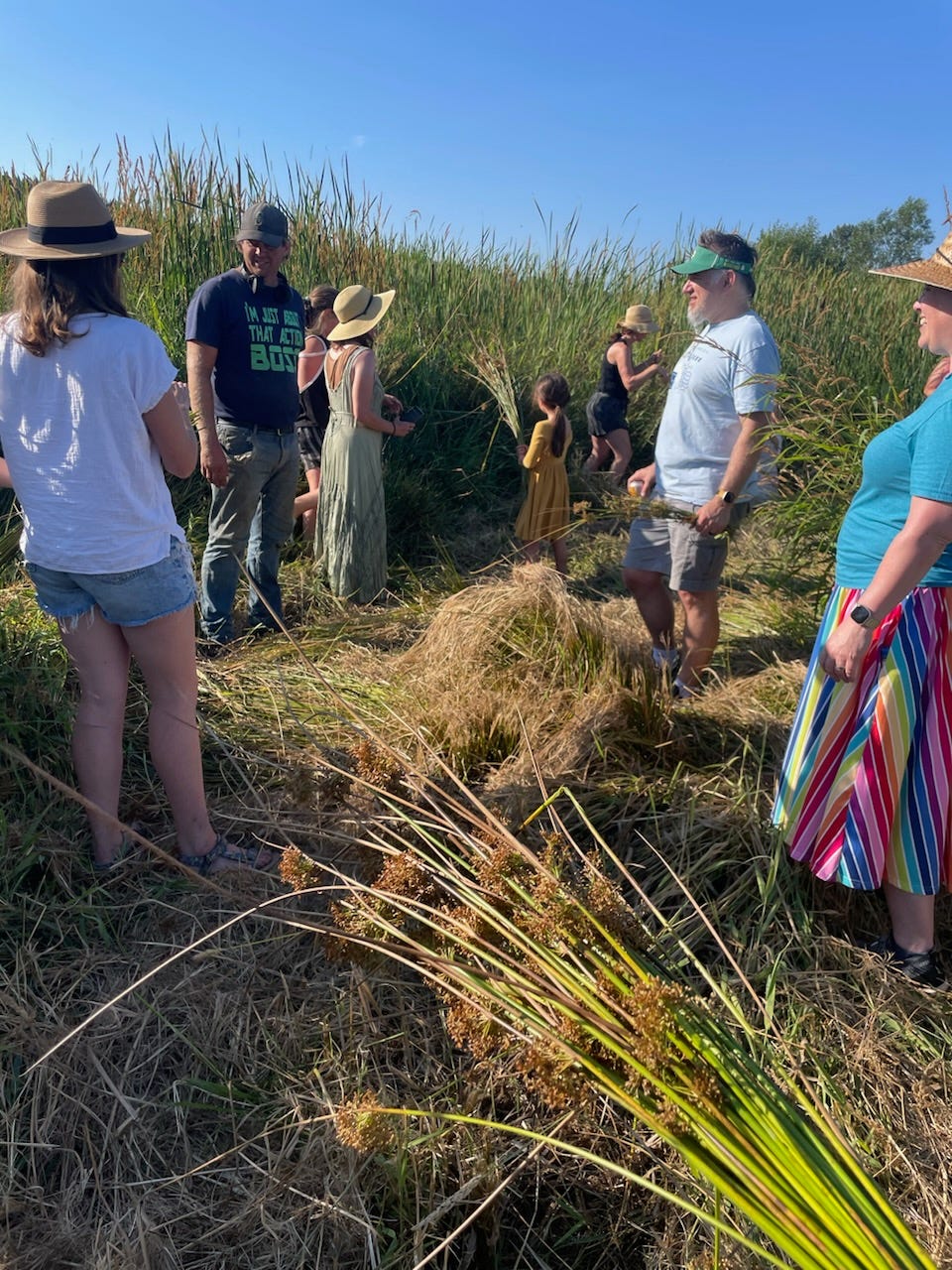
Everyone harvested bundles of rushes, and I was so taken aback by the care and diligence with which even the littlest of hands picked their rushes.
Rushbearing
After everyone had gathered their bundles and wandered back to the hay field, we wove these prompts and memories even deeper by creating bearings. As rushbearing services & processions grew over the centuries, parishioners would wield “bearings” - various shapes decorated with rushes and flowers from their locale.
For creating our bearings, I set up a table of options: wire wreath forms shaped like crosses or circles, a tub to soak the rushes (just an old cow-waterer, actually!), and an assortment of flowers grown by my dear friend Claire Sibley of Anthology Farm.
I had done a test-run weaving a bearing the night before, trying to recreate the patterns I had seen in a variety of photos and etchings. Honestly, I wasn’t quite sure how approachable it would be for the kiddos: but they loved it and worked tirelessly, creating the most beautiful bearings!

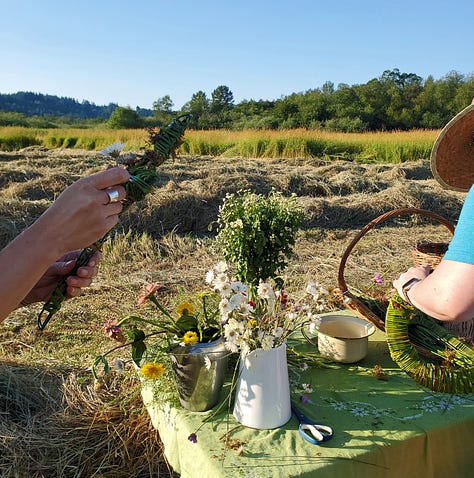

In Grasmere, England, rushbearing is still practiced - and it’s traditional to enjoy fresh gingerbread after the service & procession. Since the 1850s, Sarah Nelson’s Grasmere Gingerbread has provided this treat - so it was only fitting that our rushbearers would enjoy some gingerbread after the festivities, too!
Sarah Nelson ships internationally nowadays, and they put so much care into their packaging that the gingerbread arrives fresh and flavorful. As an extra special summer treat, I had ordered some for our family to enjoy the past couple years after rushbearing; I continued the tradition and ordered another batch for our liturgical folks!
(As a side note: if you’ve been here for awhile, you probably know that I’m passionate about local food. Finding local adaptations to liturgical traditions is really important to me, since it tells the story of how these feasts manifest in our own varied places. That being said, getting to enjoy a special treat from afar - something connected with the heritage of this liturgical tradition - also provides a lot of meaningful continuity).
Benediction
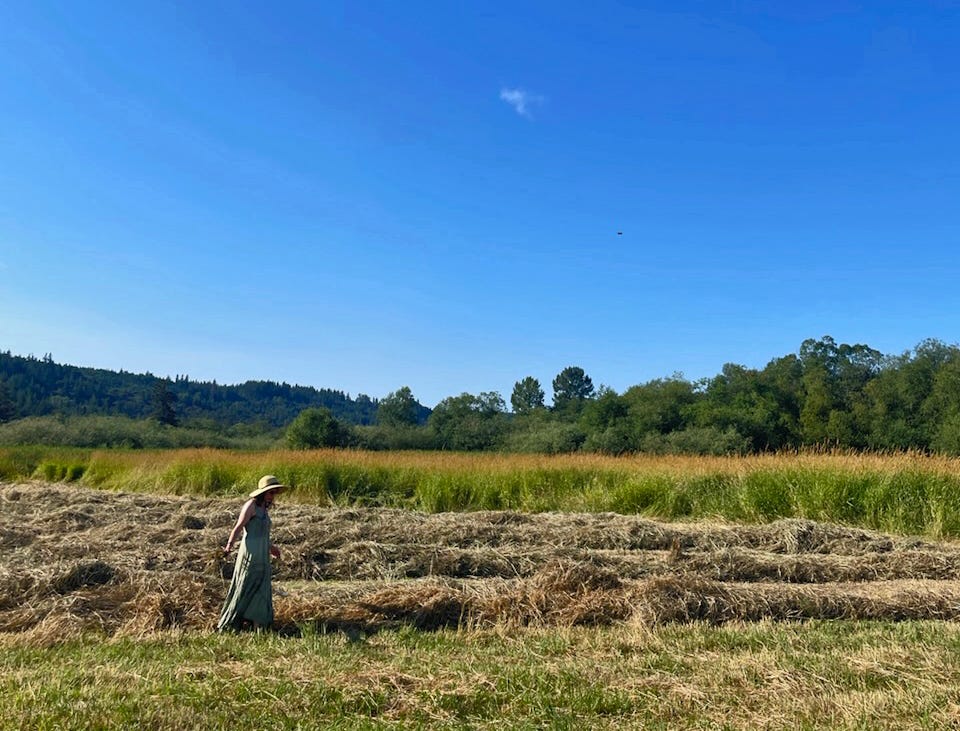
Our fathers to the house of God,
As yet a building rude,
Bore offerings from the flowery sod,
And fragrant rushes strewed.May we, their children, ne’er forget
The pious lesson given,
But honour still, together met,
The Lord of earth and heaven.Sing we the great Creator’s praise,
Who sends us sun and showers,
To cheer our hearts with fruitful days,
And deck our world with flowers.These of the great Redeemer’s grace
Bright emblems here are seen!
He makes to smile the desert place
With flowers and rushes green!Rev. Owen Lloyd, The Rushbearing Hymn
Honestly, I was filled to the brim with emotion after our rushbearing gathering. I have so many beautiful memories of sharing in this with my kids over the past few years, or even just exploring it solo as I tried to wind my way through the historical context; but expanding that into community brought a new depth and breadth to it all. Seeing my kids run alongside new friends, watching all those hands busily weaving rushes while sharing stories and learning about each other…folks hailing from different circumstances, all finding common ground in a practice borne from the tangible needs of ancient churches…what a heartening thing.
At our monthly gatherings, we host a community service element: collecting food, diapers, shoes… But, for rushbearing, I left our members with an invitation that I’ll leave you with, too: friends, would you seek out a “rushbearing” opportunity in your community? A need for tangible help…something that will aid our local infrastructures, allowing them to, in turn, continue to help others?
Maybe this isn’t the right season for you to pursue that invitation. But, if it is, I’d encourage you to keep your eyes open to see what needs appear. I’m here to help brainstorm ideas alongside you…
Pax et bonum,
Kristin



P.S. A printable rushbearing gift-tag is available in the Scriptorium for my paid subscribers!
If you’d like to make a one-time donation, I have a PayPal Tip Jar - please know that I’m so grateful for your monetary support, which really does help me continue to do this work that I’m so passionate about!
For those who are able to support a monthly or annual paid subscription, I offer occasional new printables, extra posts, and access to my whole library of printables: the Scriptorium. I’m so grateful for your generosity, which helps to support my work through the purchase of additional books for research, art supplies, and more!
For more reflections and perspectives on the liturgical year, please visit Signs + Seasons: a liturgical living guild!
A historic, thrifty form of lighting - peel the outer later of the rush to reveal the foamy pith, dip it in tallow, and let it dry…voila, a dim light!
For each of our Liturgical Life gatherings, I like to provide a prompt or theme for the pot-luck. It’s not strict in the least, and I also am adamant that folks don’t feel pressured to bring anything at all - but a prompt makes for some fun & creative ideas when we’re all feeling stuck.



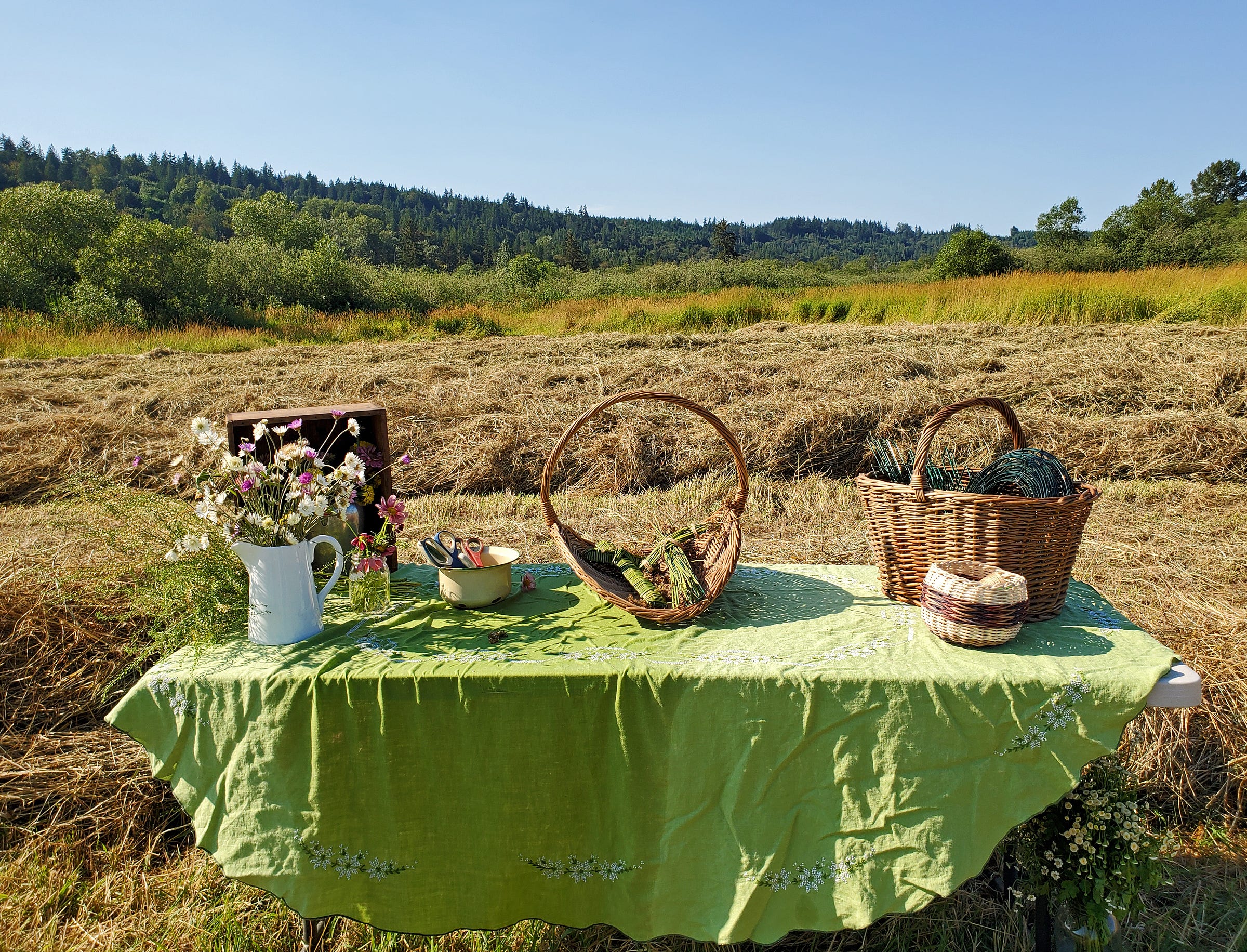

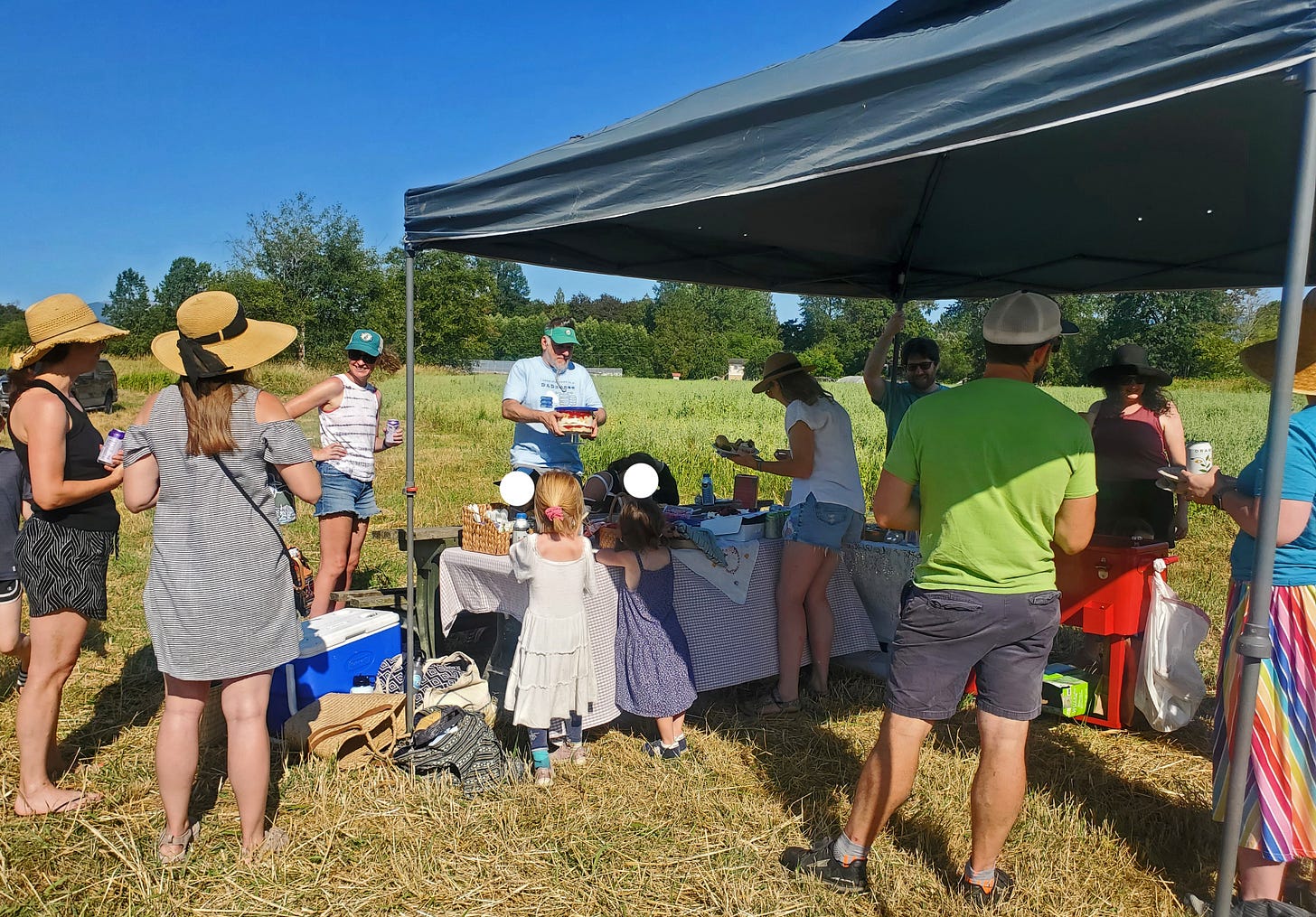
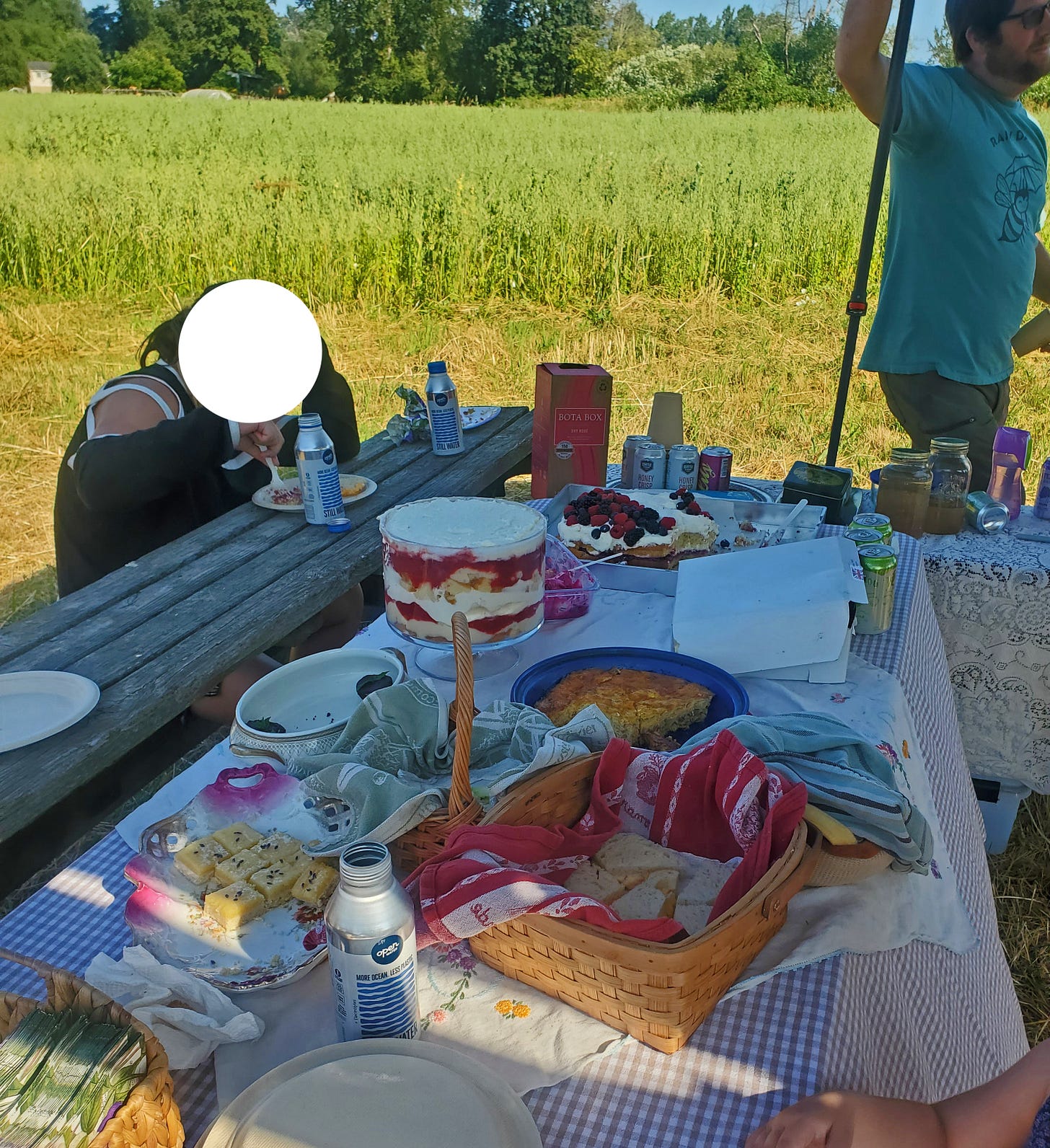
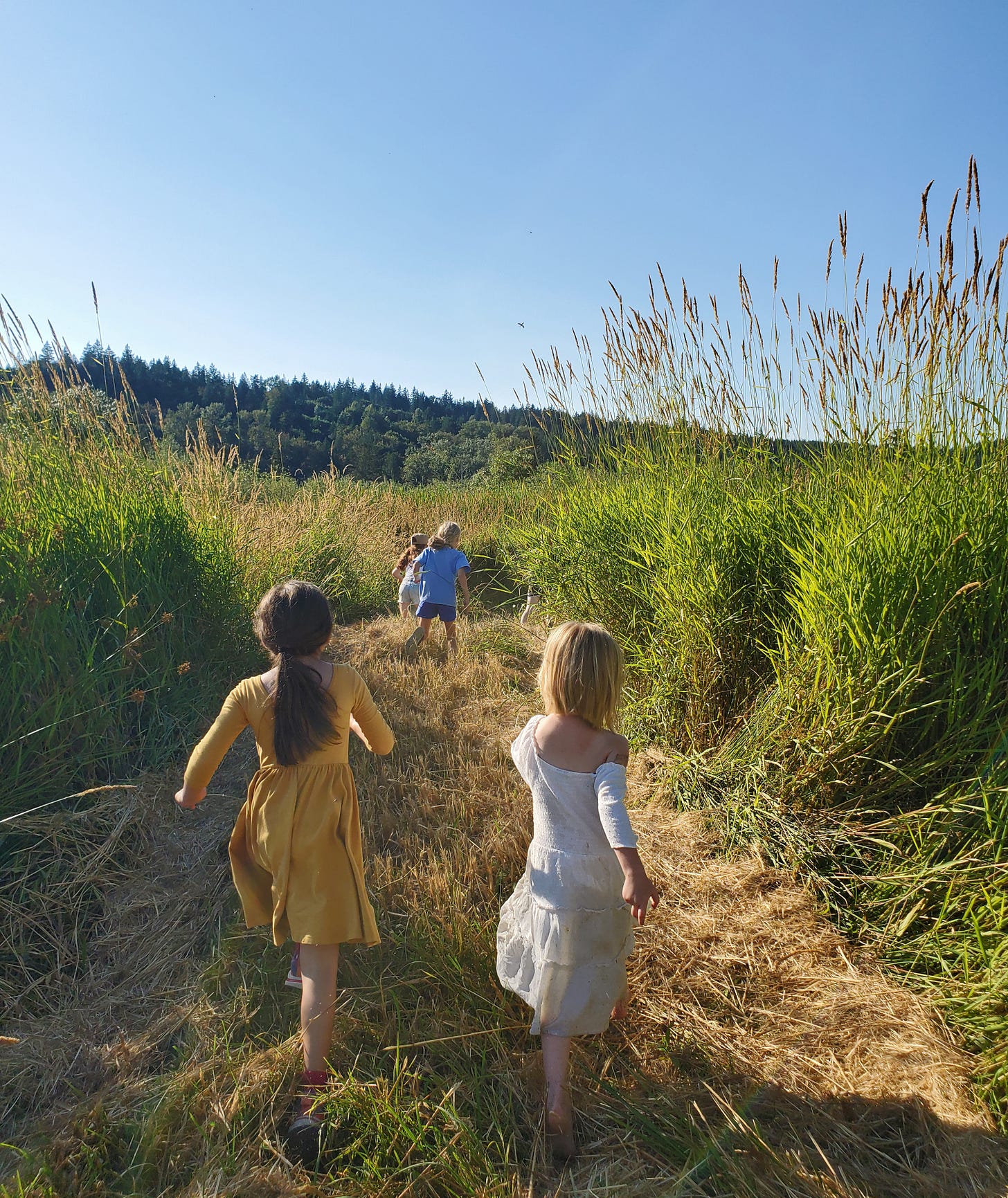

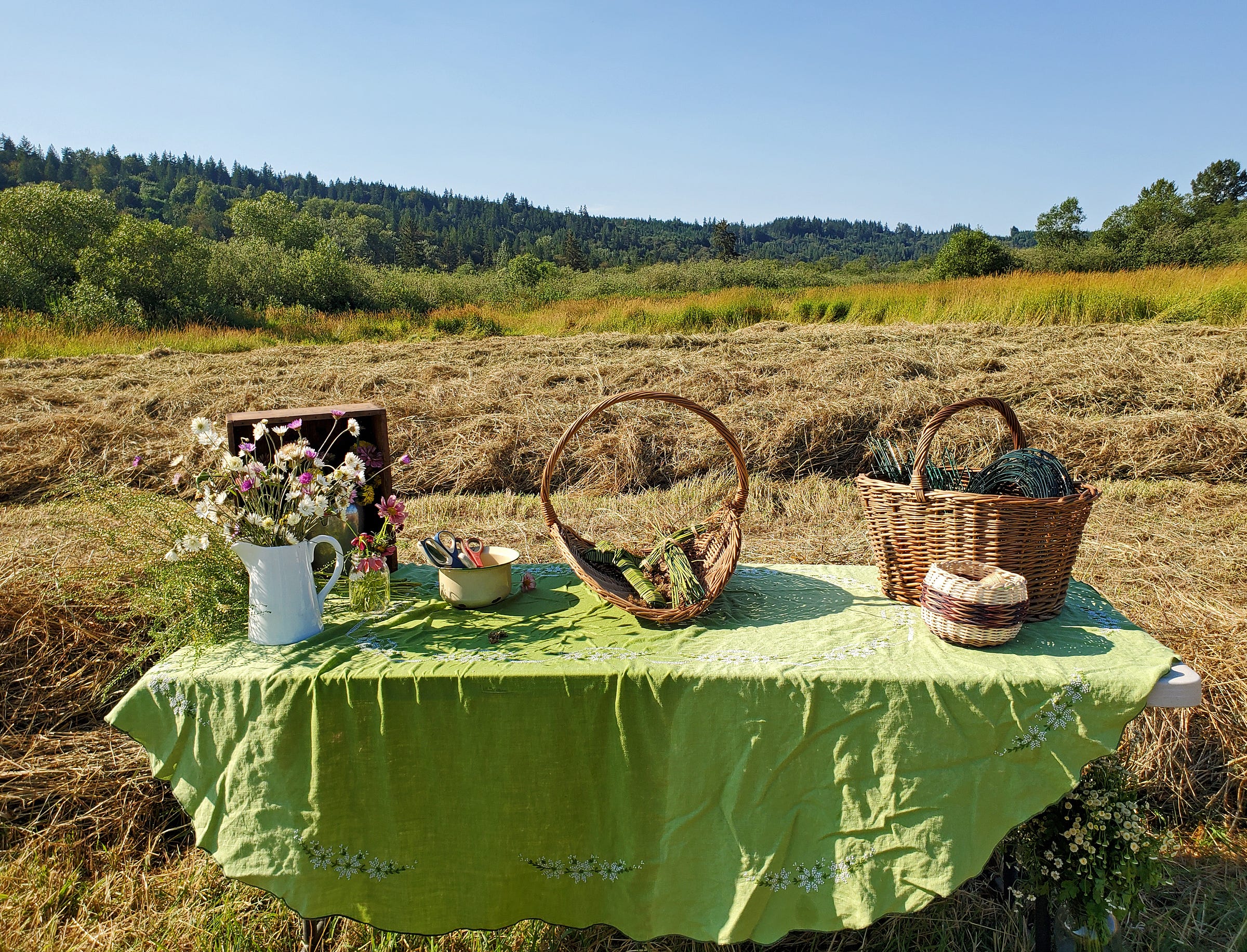
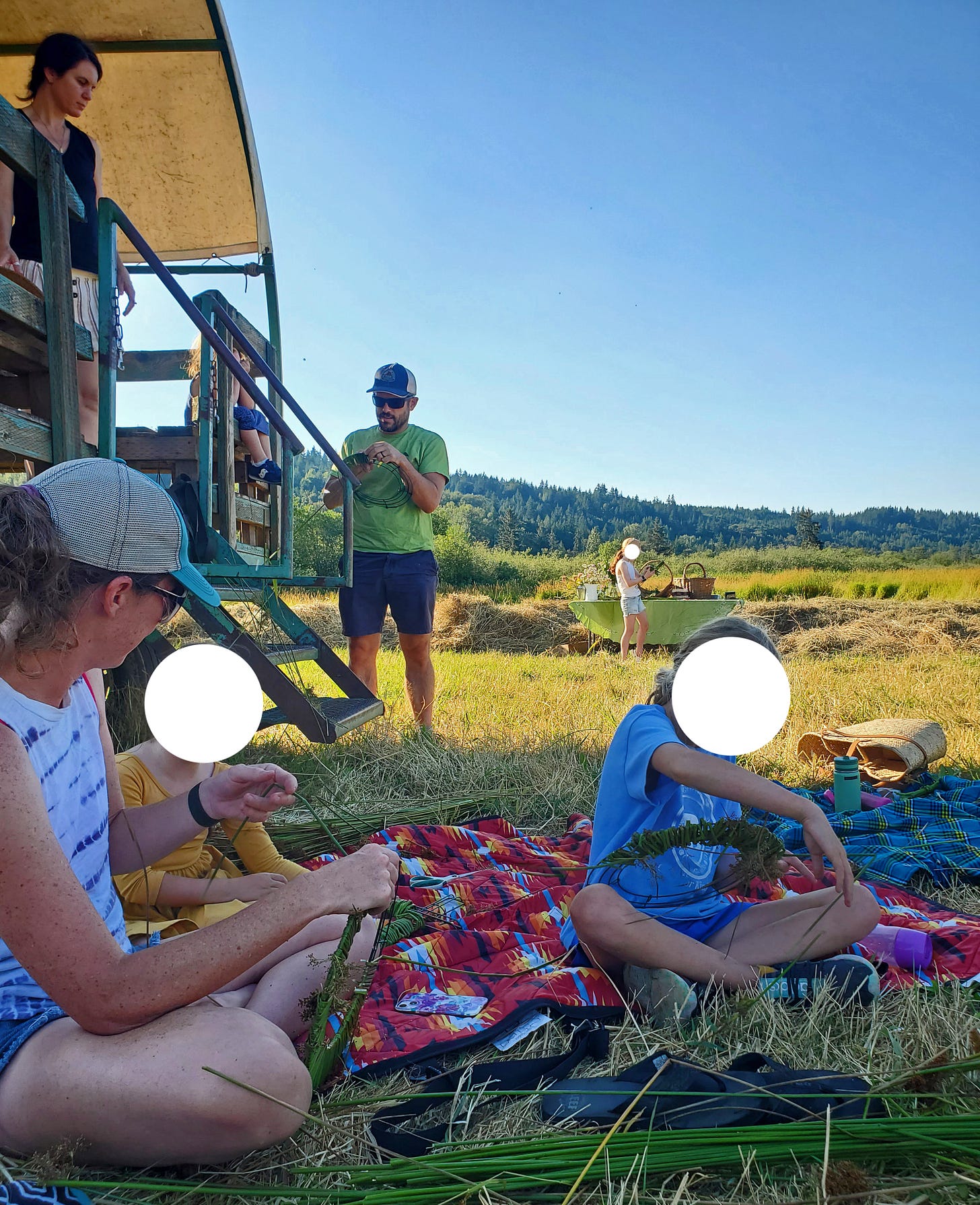
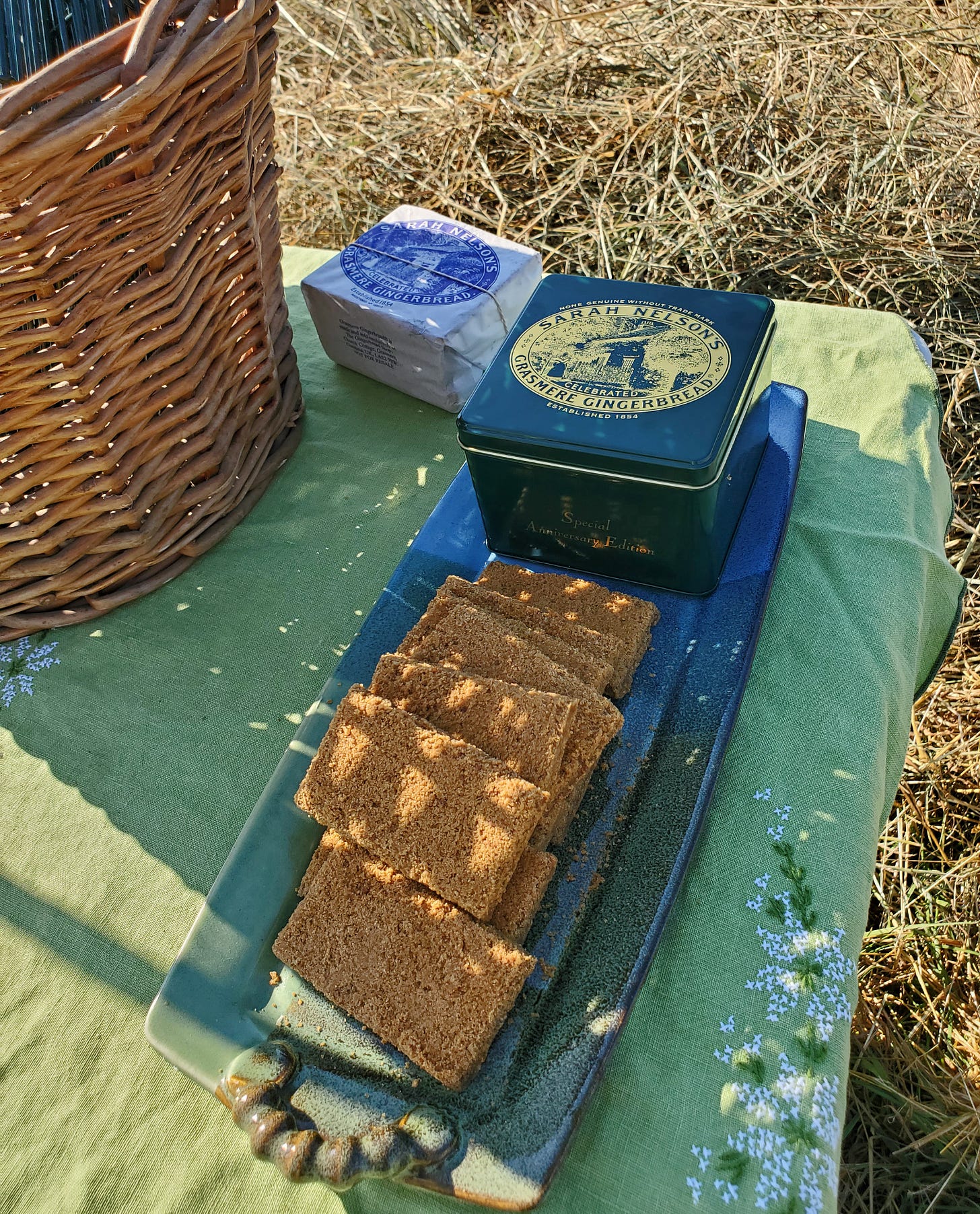
This is lovely. Also, how was the Grasmere gingerbread? I know about that and have often thought it would be fun to try. I love the picture of you rush bearing too. ❤️
Caring for our communal, sacred spaces. That sentence described it all - the past history of rush bearing and how we can bring it into our modern lives. I am going to take my thoughts away and really think on your final question. Seeing the enthusiasm and abandon with which the various participants threw themselves into your whole event made my eyes well up with tears! Those experiences will inform their future thoughts on community and their place in it. Thank you again for a timely, firm reminder to strengthen the liturgical and natural bonds within community. Love what you are doing!!!